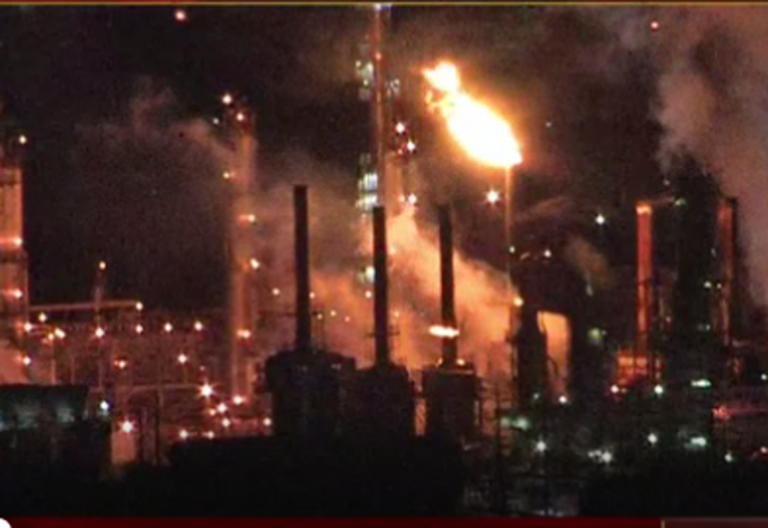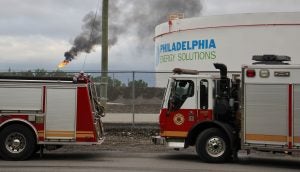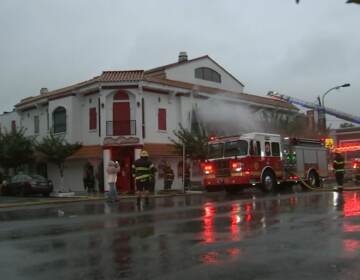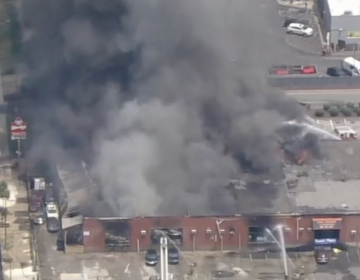Philly refinery fire under investigation; pollution impact unclear
Air quality experts say the Philadelphia Energy Solutions refinery fire released enough particulate matter to affect neighbors.

Crews battled a fire at the Philadelphia Energy Solutions refinery on Monday night (NBC10)
Philadelphia Energy Solutions said a fire that broke out Monday night at the refinery caused no injuries and did not affect neighboring residents, though some contest the latter claim.
The fire started approximately at 7:20 p.m., and was “quickly contained and safely extinguished,” according to statement provided by PES. Neighbors and Phillies fans reported seeing a black plume of smoke coming out of the refinery.
Black smoke was visible throughout Philadelphia after the Philadelphia Energy Solutions Refinery Complex caught fire Monday evening. The fire was contained and no injuries were reported. @SkyForce10 was over the scene. https://t.co/OTeDqWku1j pic.twitter.com/M5vun9Y2Wr
— NBC10 Philadelphia (@NBCPhiladelphia) June 11, 2019
A Philadelphia Fire Department spokesperson said the refinery’s own fire brigade acted in coordination with the city’s companies, who left the area after 8:30 p.m.
“We were asked to stand by and cool off [hose down] certain areas while PES firefighters handled the fire, which involved shutting off several valves,” Kathy Matheson said in an email.
Drexel University’s air quality expert Peter DeCarlo, who regularly monitors air near PES as part of his research, said the smoke was of a high enough concentration and traveled far enough to impact residents living next to the refinery.
“It’s absurd to say there are no offsite impacts when a plume of smoke is clearly visible extending well beyond the area of the refinery, and that’s only the stuff we can see,” DeCarlo said in an email.
PES said the cause of the fire is under investigation, but did not respond to a request asking what was burning at the refinery. PES refines crude oil.
“Without knowing what was burning, it’s hard to know what chemicals may be present in the plume,” DeCarlo said. “What is clear is that there was a significant concentration of particulate matter emitted that impacted residents of Philadelphia downwind of the refinery.”
Matt Walker, Clean Air Council’s advocacy director, told PlanPhilly the public, especially the refinery’s neighbors, deserve to know what kind of air pollution they were exposed to and how much of it.
“PES is the Philly area’s largest industrial source of harmful air pollution and this fire adds to its track record of air permit violations and incidents that negatively impact public health,” Walker said.
Grassroots environmental organization Philly Thrive claims PES’s pollution contributes to the high rates of asthma and cancer in South Philadelphia. Although it’s not possible to directly link specific cases to one source, the refinery is Philadelphia’s single largest generator of particulate emission air pollution, according to city data.
Typically, the refinery’s plume is white and mostly steam. Anything going through a stack is usually put through pollution control systems. With an open fire, pollutants and particulate matter escape.
In response to the fire, Philly Thrive organized a rally in front of PES on Tuesday evening. Organizer Alexa Ross said neighbors smelled the fire, had headaches and nausea. The group had previously demonstrated against the refinery on June 1.
The refinery did not respond to a request to disclose its emergency response systems. Philadelphia’s firefighters regularly tour the facility to become familiar with it, said fire department’s Matheson, and belong to their Community Advisory Panel.
“We apologize for any concern this has caused the community,” PES said in its statement.
The Health Department said in a statement it’s working with PES to identify any negative effect of the fire to the community.
WHYY is your source for fact-based, in-depth journalism and information. As a nonprofit organization, we rely on financial support from readers like you. Please give today.








